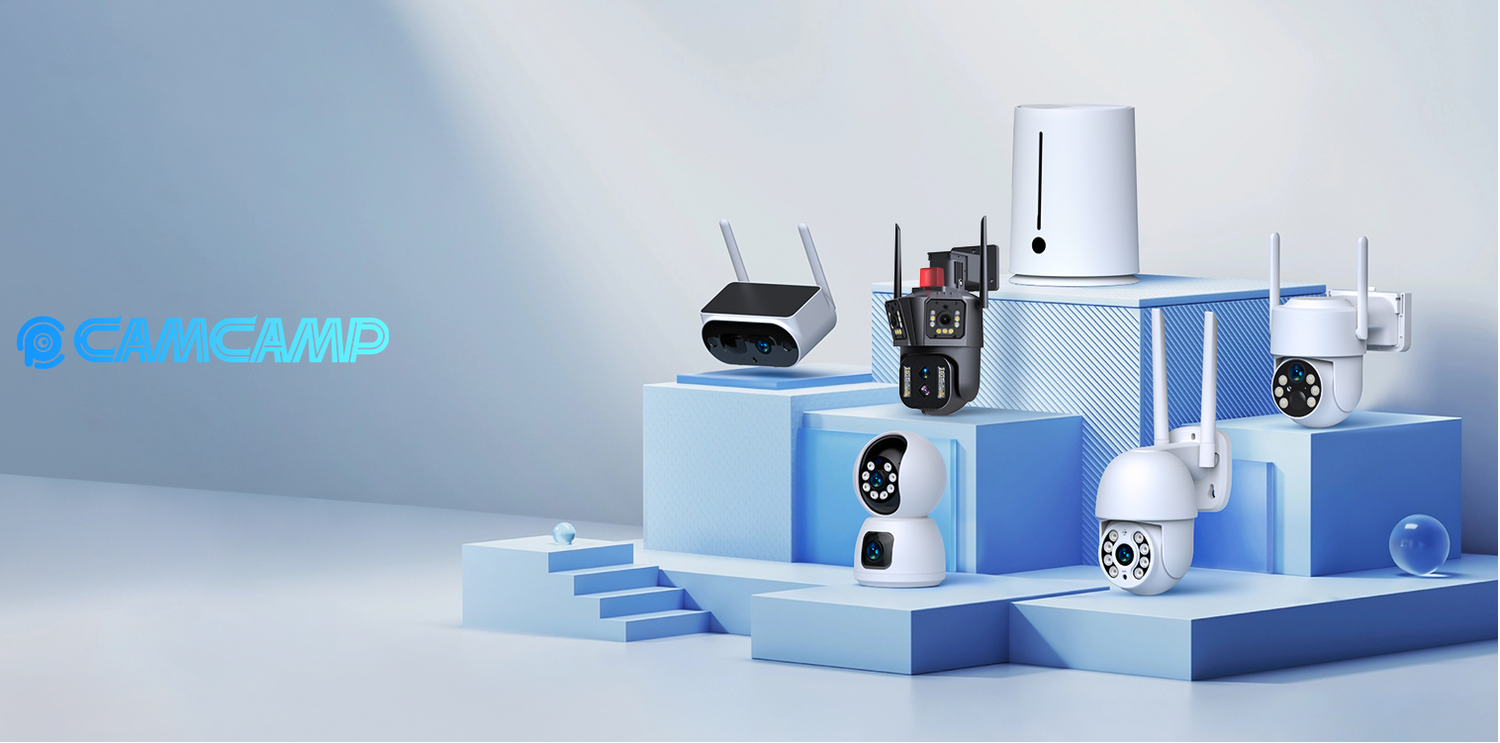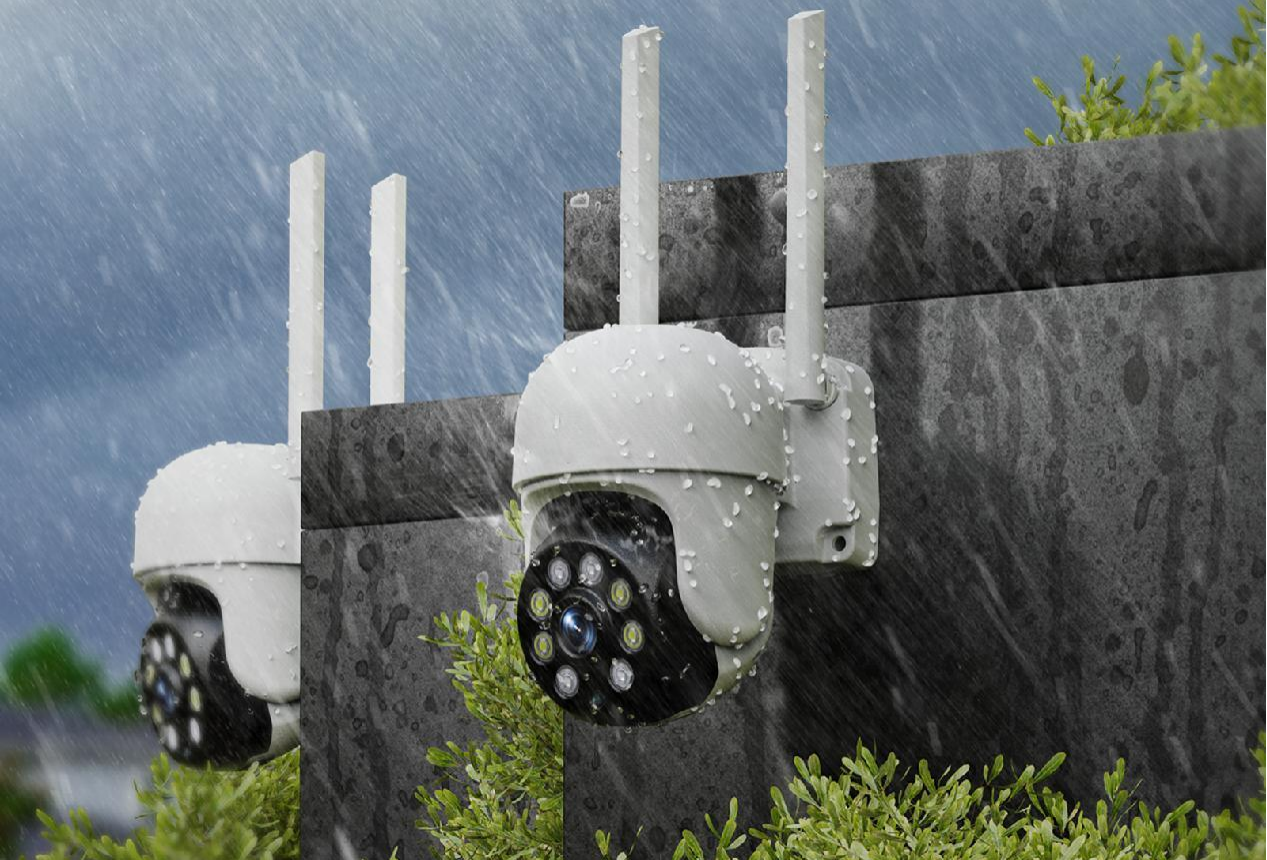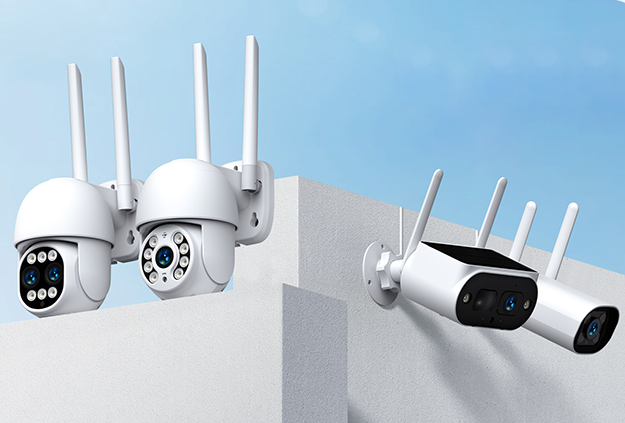In the field of security monitoring, choosing the right camera type is crucial for effective monitoring and security management. Among the many camera types, dome cameras, bullet cameras, turret cameras and fish-eye cameras are common options. This article will introduce in detail the characteristics, applicable scenarios, advantages and disadvantages of these four camera types to help readers make a wise choice when purchasing a camera.
Dome Cameras

It is a camera with a spherical shape. It has omnidirectional swivel and tilt functions for flexible adjustment and rotation in both horizontal and vertical directions. Dome cameras are usually smaller in size and more discreet in appearance. The dome camera can be fully adjusted horizontally and vertically, providing a wide range of surveillance. Due to its small size and flexible installation, the dome camera is suitable for surveillance environments that require concealment. Dome cameras are usually well protected against harsh environmental conditions. Commonly used for indoor monitoring, such as offices, shopping malls, hotels and other places.
Advantage:
Omnidirectional adjustment: The dome camera provides a wide monitoring range with no blind spots.
Flexible installation: The dome camera is small in size and can be installed in hidden locations.
Shortcoming:
Relatively high cost: Dome cameras are more expensive than other types of cameras
Bullet Camera

A bullet camera, also called a gun camera, is a camera with a long strip shape. It usually has a fixed focus and viewing angle and is suitable for monitoring in a specific direction. Bullet cameras usually have a fixed focal length and viewing angle and are suitable for monitoring needs in specific directions. Since bullet cameras usually have longer lenses, they can monitor and shoot at long distances. Bullet cameras usually have good waterproof performance and are suitable for outdoor surveillance environments. Bullet cameras are often used for outdoor surveillance, such as parks, parking lots, access control and other places.
Advantage:
Long-distance shooting: The bullet camera has a longer lens, which enables long-distance monitoring.
Waterproof performance: Bullet cameras usually have good waterproof performance and are suitable for outdoor environments.
Shortcoming:
One-way adjustment: Bullet cameras can usually only be adjusted in one direction and cannot rotate in all directions.
Turret cameras

Turret cameras have a similar appearance to a dome camera but can only rotate in the horizontal direction. Turret cameras are typically larger and have more power and advanced features. The turret-type camera can rotate at full angles in the horizontal direction, providing a wide horizontal monitoring range. Turret cameras usually have more advanced features such as HD image quality, remote control, etc. Turret cameras are suitable for places that require extensive horizontal monitoring, such as large squares, conference venues, etc. It has higher image quality requirements. Turret-type cameras are often used in scenes with higher image quality requirements, such as banks and museums.
Advantage:
Horizontal rotation: The turret-type camera has the ability to rotate horizontally at all angles, providing a wide monitoring range.
Advanced features: Turret cameras usually have more advanced functions and features, such as high-definition image quality, remote control, etc.
Shortcoming:
Larger size and appearance: Turret cameras are generally larger and less suitable for surveillance environments where concealment is required.
fish-eye Camera

A fish-eye camera is a camera with a wide-angle lens that enables panoramic surveillance. It uses a special fish-eye lens design to capture images of the entire environment from a single camera position. fish-eye cameras can achieve panoramic surveillance without the need for multiple cameras. fish-eye cameras have a wide field of view and can cover a wider monitoring area. fish-eye cameras are suitable for places that require panoramic surveillance, such as large conference rooms, exhibition halls, etc. They are also suitable for places that need to cover a wide area, such as open office areas, shopping malls, etc.
Advantage:
Panoramic surveillance: fish-eye cameras can achieve panoramic surveillance, reducing the arrangement and management of multiple cameras.
Wide-angle field of view: The fish-eye camera has a wide field of view and can cover a wider monitoring area.
Shortcoming:
Distortion effect: Images from fish-eye cameras usually have a certain degree of distortion, which may affect the accuracy and details of the image.
Conclusion
If you need all-round adjustment and a wide monitoring range, and do not have high requirements on camera size and appearance, a dome camera is a good choice, and If you need long-distance surveillance and fixed-direction surveillance, bullet cameras are a good choice. Turret cameras are a good choice if you need a wide horizontal surveillance range and advanced features. If you need panoramic surveillance and a wide field of view, fish-eye cameras are a good choice. In addition, you can also consider mixing different types of cameras and combining them according to specific scenarios and needs to achieve more comprehensive and effective monitoring.
In summary, choosing the right type of camera depends on your specific needs and budget constraints. Before choosing, it is recommended to conduct sufficient research and evaluation, choose high-quality cameras from reliable brands, and make informed decisions based on the actual situation.




Leave a comment
This site is protected by hCaptcha and the hCaptcha Privacy Policy and Terms of Service apply.